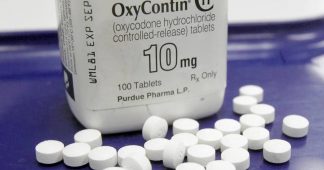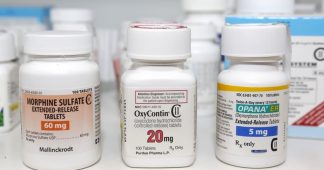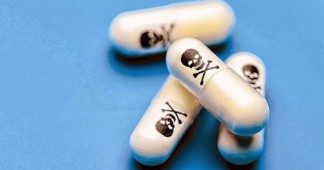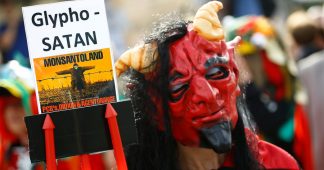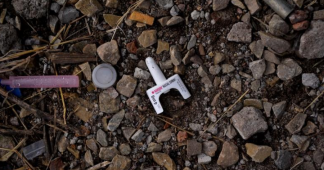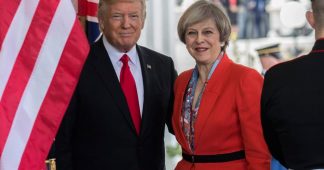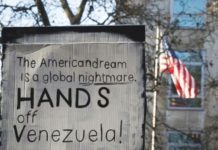By Genevieve Leigh
29 August 2019
On Monday, Oklahoma state Judge Thad Balkman delivered his decision from the bench in a landmark case between the state of Oklahoma and pharmaceutical company Johnson & Johnson over the company’s role in the deadly opioid epidemic. The trial was the first case brought by a state government seeking to hold a drug maker directly responsible for the death and devastation caused by the epidemic.
In his ruling, Judge Balkman ordered Johnson & Johnson to pay $572 million for its role in driving the epidemic, which has claimed the lives of more than 6,000 people in Oklahoma. The trial has been closely watched by other opioid makers, distributors and pharmacy chains, many of whom are awaiting trials on nearly 2,000 similar lawsuits.
The ruling is being cynically hailed by the mainstream media as a victory for the victims of the epidemic. This is a lie.
The final ruling in Oklahoma sent a clear signal to all the guilty parties: Business will stay open. The courts are on their side.
Wall Street celebrated the real victor, Johnson & Johnson, in after-hours trading on the stock market. The company’s stock price surged more than four percent in response to the ruling. Shares of other drug makers also surged, including Mallinckrodt, Teva Pharmaceutical and Endo International, three of the largest drug makers in the world, all implicated in the opioid epidemic.
The toothless ruling follows a well-worn pattern in which giant corporations, after committing horrific social crimes, get off with a relatively small fine.
Johnson & Johnson made billions of dollars off opioid sales for over a decade. For the fiscal year 2017 alone, Johnson & Johnson reported overall earnings of $15.3 billion, with an annual revenue of $81.6 billion. Judge Balkman’s ruling of $572 million amounts to barely two weeks’ profits for the company.
At the peak of the epidemic, other drug companies were bringing in anywhere from $403 million (for opioids sold by Endo) to $3.1 billion (in OxyContin sales by Purdue Pharma) in a single year.
In the recent trial, Oklahoma state was seeking $17 billion to pay for its plan to combat the epidemic, which they noted includes “addiction treatment, drug courts and other services.” The state predicts it will need at least the next 20 years to repair the damage done by the opioid epidemic.
Despite the paltry amount of the damages awarded, the language of the ruling was unequivocal. Judge Balkman wrote, “Defendants caused an opioid crisis that is evidenced by increased rates of addiction, overdose deaths and neonatal abstinence syndrome in Oklahoma.” He added:
The Defendants [Johnson & Johnson], acting in concert with others, embarked on a major campaign in which they used branded and unbranded marketing to disseminate the messages that pain was under-treated and ‘there was a low risk of abuse and a low danger’ of prescribing opioids … A key element in Defendants’ opioid marketing strategy to overcome barriers to liberal opioid prescribing was its promotion of the concept that chronic pain was under-treated (creating a problem) and increased opioid prescribing was the solution … False, misleading, and dangerous marketing campaigns have caused exponentially increasing rates of addiction, overdose deaths.
Balkman went on to note that the company had been warned by its own advisory board of the dangerous marketing methods: “In 2001, Defendants were advised by Defendants’ own hired scientific advisory board that many of the primary marketing messages Defendants used to promote opioids in general, and Duragesic [the company’s high-strength drug] specifically, were misleading and should not be disseminated.”
The ruling also admitted that the company had paid vast sums of money to “a variety of different pain advocacy groups and organizations that influences prescribing physicians and other healthcare professionals.”
A recent report from the Washington Post, based on leaked emails, gives a partial glimpse into the corrupt relations that prevailed between drug manufacturers and distributors. One such exchange in January 2009 was between Victor Borelli, a national account manager for drug maker Mallinckrodt, and Steve Cochrane, the vice president of sales for KeySource Medical.
Borelli wrote “Keep ’em comin’!” in response to an email informing him that 1,200 bottles of oxycodone 30 mg tablets had been shipped. Cochrane responded. “Flyin’ out of there. It’s like people are addicted to these things or something. Oh, wait, people are…”
To which Borelli replied: “Just like Doritos keep eating. We’ll make more.”
Mallinckrodt, for whom Borelli works, is one of the companies whose stocks rose following the Oklahoma ruling.
No section of the ruling class that has any intention of bringing to justice those responsible for this massive social crime. To take on the pharmaceutical companies would require taking on the entire political establishment, with which Big Pharma is intimately intertwined.
Published at https://www.wsws.org/en/articles/2019/08/29
